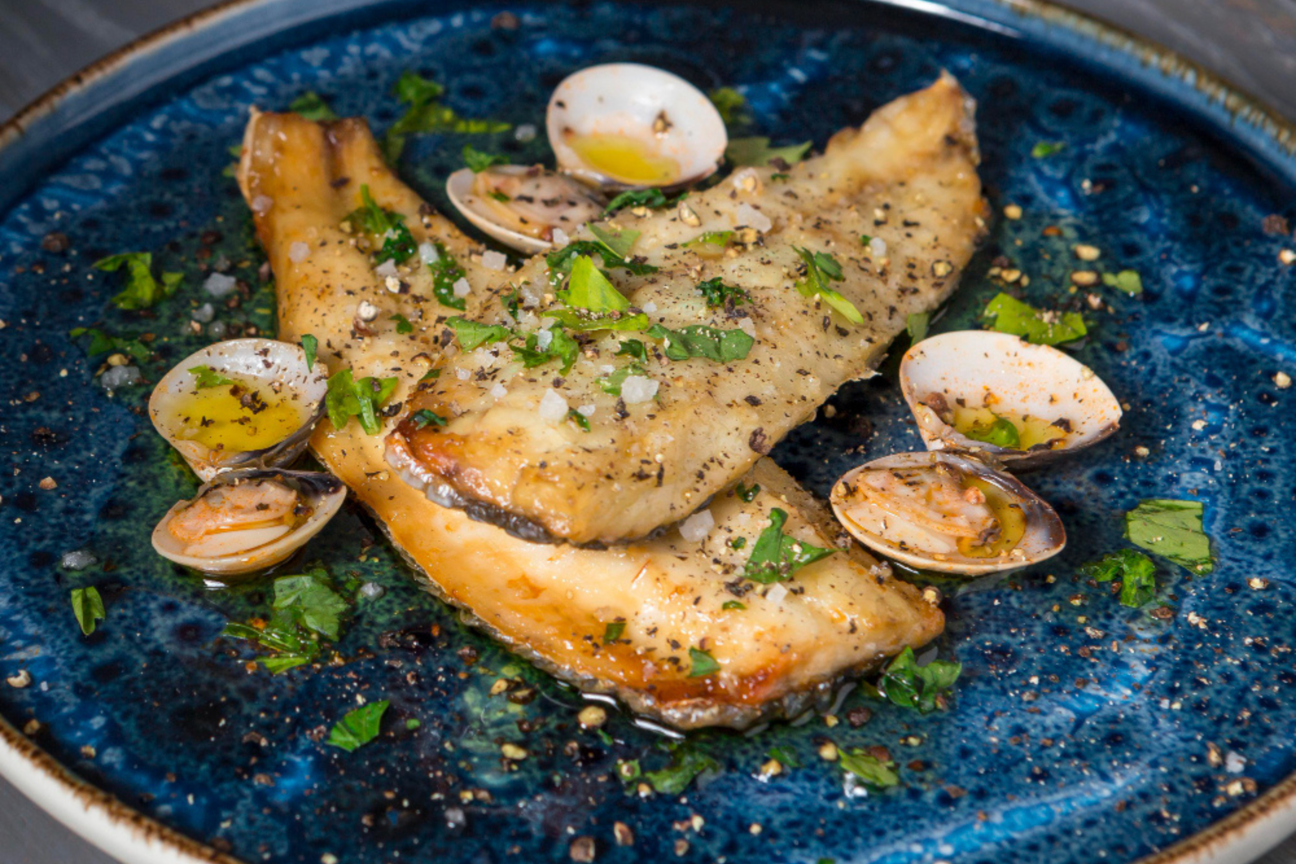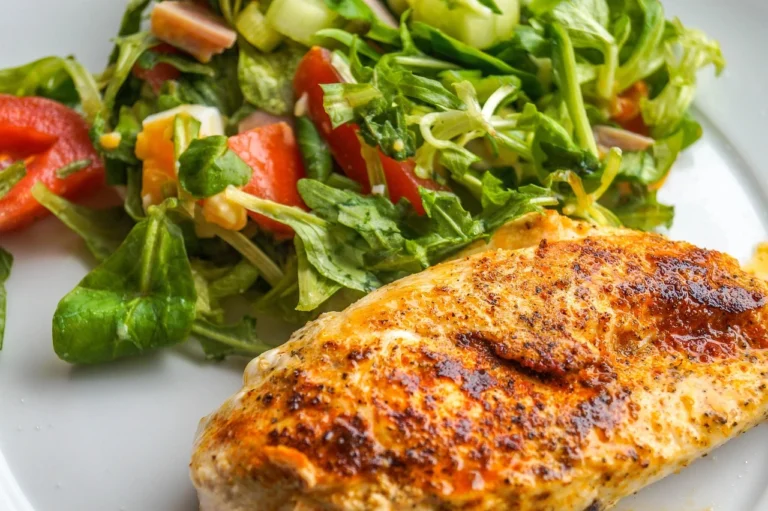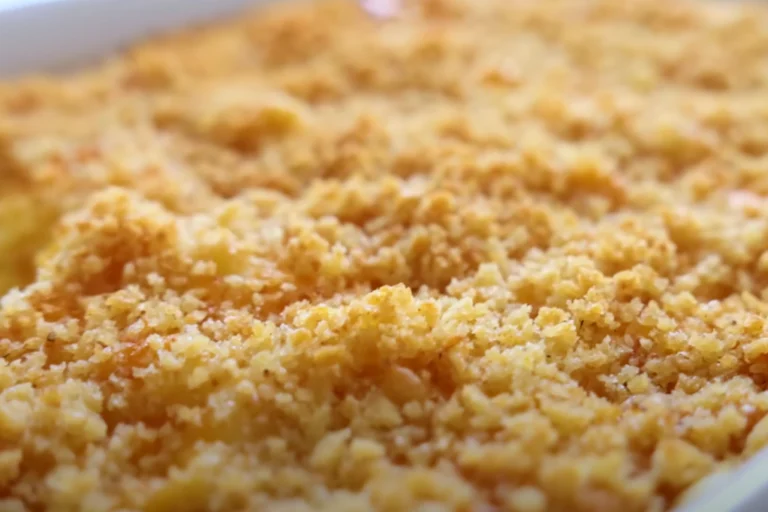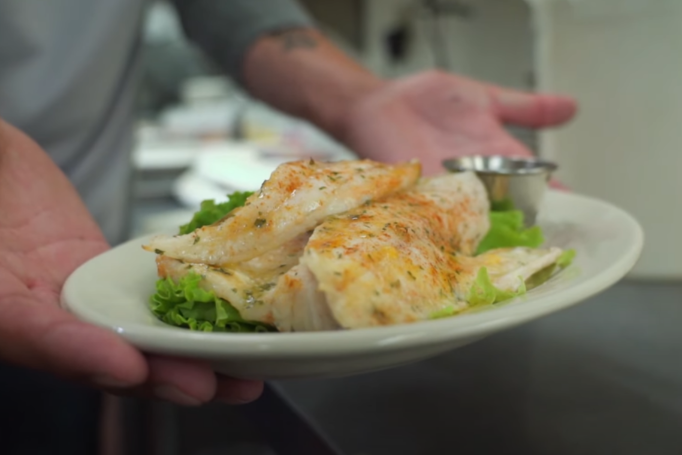Are you looking to elevate your seafood game with a delicious and versatile fish? Look no further than branzino, a Mediterranean sea bass that’s gaining popularity in American kitchens. This beautiful white fish has a delicate, slightly sweet taste that lends itself well to a variety of flavors and cooking methods.
With its light, flaky flesh, branzino is an excellent canvas for your favorite recipe. Whether you’re roasting it whole or pan-searing the fillets, this fish is guaranteed to make a lasting impression. In this guide, we’ll walk you through the best ways to prepare and season branzino, including traditional Mediterranean preparations and modern variations, all within minutes of your time.
By the end of this article, you’ll be equipped with the knowledge to create mouth-watering dishes that showcase the natural flavor of this nutritious and protein-rich fish.
Table of Contents
What is Branzino?
Branzino, a Mediterranean sea bass, has gained popularity in the US culinary scene. This white fish is prized for its delicate flavor and tender texture, making it a favorite among chefs and home cooks alike.
Origin and Characteristics
Branzino is native to the coastal waters of Europe & North Africa. Typically, it weighs between 1-1.5 pounds, with a silvery skin and streamlined body. In recent years, branzino has become increasingly available in American markets and restaurants. It’s known by different names, European bass, lavraki, capemouth, loup de mer, and Mediterranean sea bass.
- A Mediterranean sea bass with a rich history
- Silvery skin and streamlined body
- Typically weighs between 1-1.5 pounds
Flavor Profile and Texture
Branzino is renowned for its mild, delicate flavor that isn’t overly “fishy.” The fish has tender, flaky white flesh that cooks quickly, making it an ideal choice for a variety of cooking methods. As a lean source of protein, branzino is not only delicious but also a nutritious option. When farmed properly, it’s considered a sustainable seafood choice.
Selecting the Perfect Branzino
To ensure a delicious branzino dish, selecting the right fish is crucial. You can find branzino at specialty fish markets, some well-stocked grocery stores, and online seafood retailers.
Fresh vs. Frozen Options
When deciding between fresh and frozen branzino, consider the benefits of each. Fresh fish is often preferred for its texture and flavor, but frozen branzino can be just as good if it’s been properly flash-frozen. Frozen options can be more convenient and just as nutritious.
Signs of Freshness
To identify fresh whole branzino, check the eyes: they should be bright and shiny. Perform a smell test; fresh fish should have a clean, oceanic scent, not an overwhelmingly fishy smell. The scales should be bright and metallic. When purchasing fillets, choose ones with firm, translucent flesh and no signs of discolouration. Consider the ingredients and the condition of the skin if it’s intact.
- Clear eyes and bright red gills
- Firm flesh
- Bright, metallic scales
- Clean, oceanic scent
Preparing Branzino for Cooking
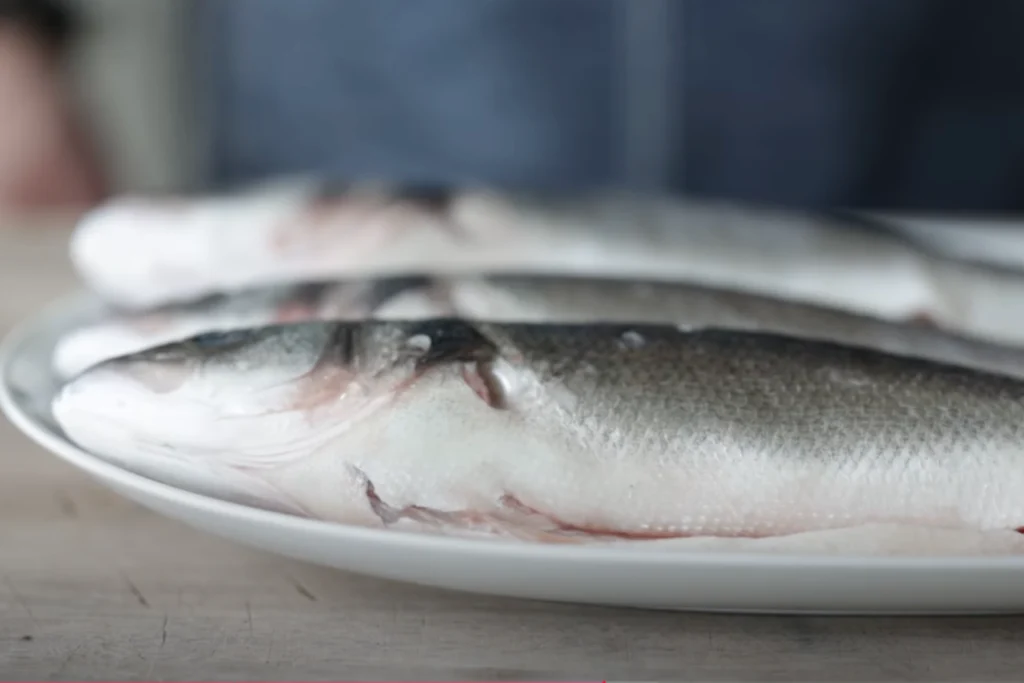
Before you start cooking branzino, it’s essential to prepare it properly. This involves a few key steps to ensure your fish is clean, scaled, and ready for seasoning.
Cleaning and Scaling
To clean and scale your branzino, start by patting the fish dry with paper towels. This helps remove excess moisture, allowing seasonings to adhere better. Next, make diagonal slits in the skin using a sharp knife this allows the seasonings to penetrate better and promotes even cooking. If your branzino isn’t already gutted and scaled, you’ll need to do this carefully to avoid damaging the delicate flesh.
Whole Fish vs. Fillets
You can cook branzino whole or as fillets. Cooking whole retains moisture and flavor, while fillets offer a quicker cooking time. Choose whole fish for a more dramatic presentation or fillets for ease of eating.
Essential Prep Tools
To prep your branzino efficiently, you’ll need a few essential tools: a sharp knife for making precise cuts, kitchen shears for trimming fins, and a fish scaler for removing scales. Having these tools on hand will make the prep process smoother and save you prep time.
Roasting Whole Branzino
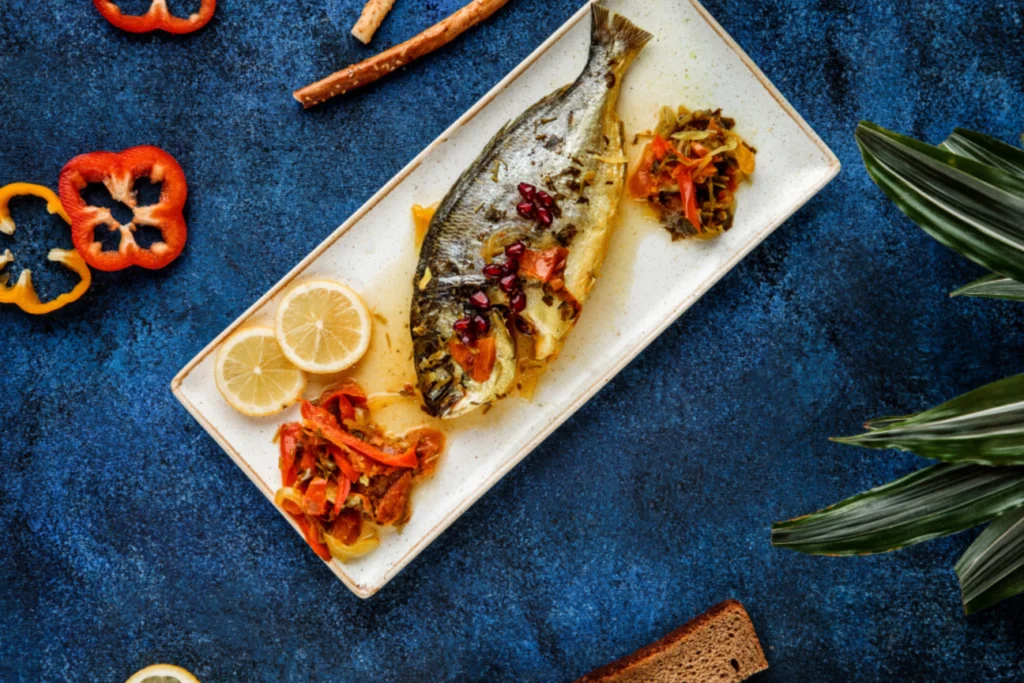
A whole branzino roasted to perfection is a culinary masterpiece that can enhance any meal. This technique highlights the fish’s natural flavors while maintaining its moisture and tenderness.
Greek-Style Roasted Branzino
For a classic Greek-inspired dish, try roasting your branzino with olive oil, lemon, and herbs. Drizzle the fish with olive oil and season with salt, pepper, and your choice of herbs like thyme or oregano. add a few lemon slices inside the cavity for flavor.
Herb and Citrus Stuffed Branzino
Enhance your roasted branzino by stuffing its cavity with aromatics. Use a combination of lemon slices, fresh herbs like parsley or dill, and garlic cloves. This will infuse the fish with a wonderful aroma and rich flavor.
Temperature and Timing Tips
For perfectly roasted branzino, preheat your oven to 400°F to 425°F. Place the fish on the center rack and roast for 5 minutes on one side. Then, flip it and cook for an additional 5 to 7 minutes, or until the flesh flakes easily. To achieve crispy skin, finish by broiling the fish for 3 to 4 minutes, positioning it about 6 inches from the heat source.
To prevent the delicate fish from sticking to the roasting pan, line it with parchment paper or a bed of vegetables. This not only prevents sticking but also adds extra flavor to your dish. Roasting on a bed of herbs or vegetables like cherry tomatoes and asparagus can enhance the overall flavor and presentation.
Pan-Searing Branzino Fillets
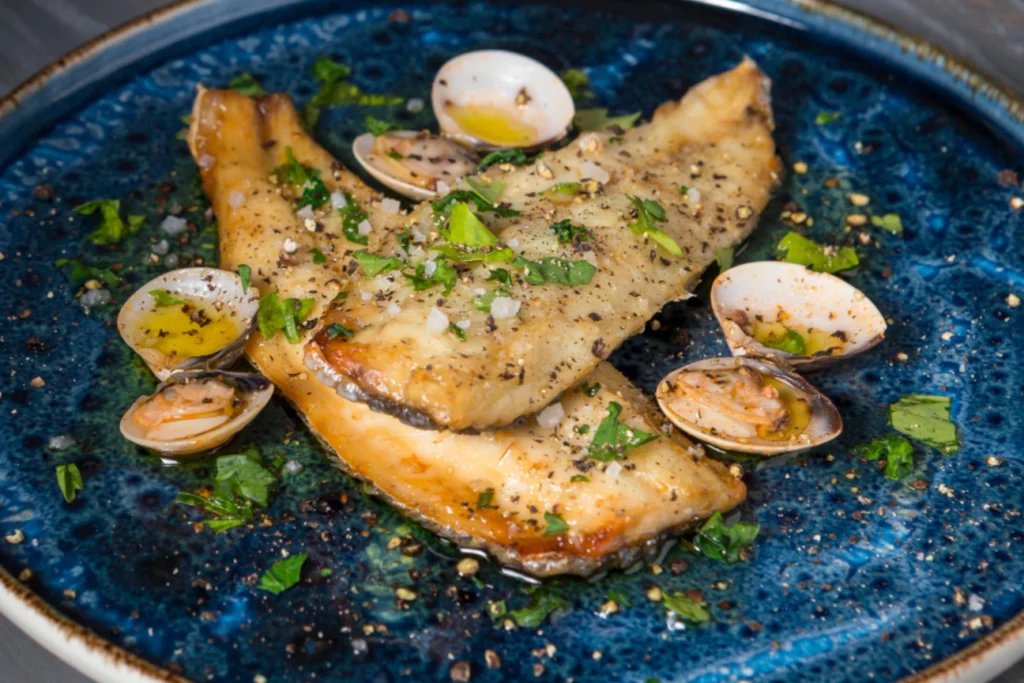
Branzino fillets, when pan-seared to perfection, offer a culinary experience like no other. The secret to achieving this success lies in both the technique and the quality of the ingredients used.
Perfect Pan-Searing Technique
To pan-sear branzino fillets perfectly, start by heating a skillet on medium heat. Add a generous amount of butter and let it melt. Once melted, place the branzino fillets skin side down. Cook for about 3 minutes, then flip them over and cook for an additional 3-4 minutes. The result is a crispy skin and a tender, flaky interior.
The importance of patting the fillets dry before cooking cannot be overstated, as it helps achieve a crispy skin. Preheating the pan properly is also crucial for an even cook.
Butter and Lemon Pan Sauce
A simple yet delicious accompaniment to pan-seared branzino fillets is a butter and lemon pan sauce. After cooking the fillets, remove them from the pan and set aside. Add a squeeze of fresh lemon juice to the pan, scraping up any browned bits. Add a little more butter to enrich the sauce, then return the fillets to the pan, tossing them to coat evenly.
Common Mistakes to Avoid
When pan-searing branzino fillets, avoid overcrowding the pan, as this can lower the oil temperature and result in uneven cooking. Flipping the fillets too early can also prevent the skin from crisping up properly. Using a non-stick or well-seasoned cast iron pan can help prevent these problems.
Delicious Branzino Seasoning Combinations
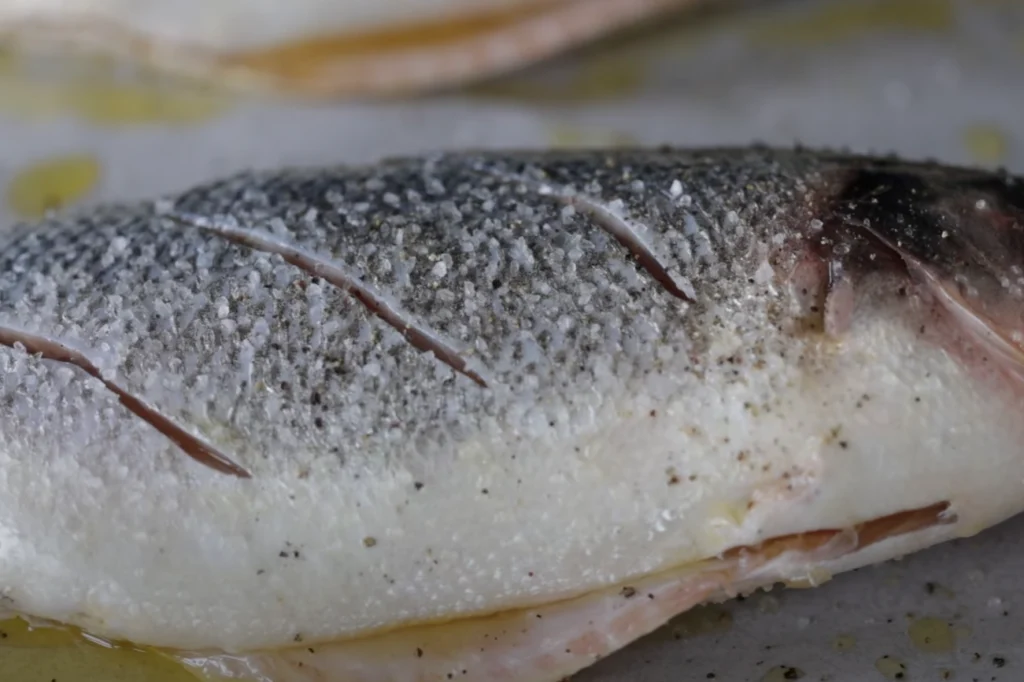
Elevate your branzino dishes with these delicious seasoning combinations that bring out the best in this Mediterranean fish. Branzino’s delicate flavor makes it a perfect canvas for a variety of seasonings, from traditional to contemporary.
Mediterranean Flavor Profile
The Mediterranean flavor profile is a classic choice for branzino, featuring a blend of herbs and citrus that complement its natural taste. Olive oil, garlic, and lemon are staples in this profile, creating a bright and refreshing flavor.
Herbs and Spices that Complement Branzino
Branzino pairs well with a variety of herbs and spices, including dill, parsley, oregano, thyme, and rosemary. These herbs enhance the fish with depth and complexity without overwhelming its natural flavor. You can mix and match these herbs to create a custom seasoning blend that suits your taste.
- Dill and parsley for a fresh, green flavor
- Oregano and thyme for a more robust, earthy taste
- Rosemary for a piney, aromatic flavor
Sauces and Dressings
Sauces and dressings can elevate your branzino dish to the next level. Here are a few options:
Ladolemono Sauce
Ladolemono, a Greek lemon-oil dressing, is made with olive oil, lemon juice, garlic, and oregano. It’s a simple yet flavorful sauce that complements branzino perfectly. You can store leftover ladolemono in the fridge for up to 2 weeks.
Other Complementary Sauces
Other sauces that complement branzino beautifully include chermoula, romesco, and homemade basil pesto. Each brings a unique flavor profile that can elevate your branzino dish.
Perfect Side Dishes for Branzino
When serving branzino, the right side dishes can elevate the dining experience. A well-chosen accompaniment can complement the delicate flavor of the fish and add variety to the meal.
Vegetable Pairings
For a Mediterranean-inspired meal, consider roasted vegetables as a side dish. A hearty Greek salad or a simple Mediterranean salad also makes a great accompaniment to branzino. You can dress these salads with leftover ladolemono for added flavor.
Starch Accompaniments
Lemon rice, Greek roasted potatoes, or crusty bread are excellent starch accompaniments for branzino. These options complement the fish without overpowering it.
Complete Meal Ideas
For a complete meal, consider a sheet pan dinner where vegetables roast alongside the branzino. This approach ensures that your side dishes are ready at the same time as the fish. You can also scale your recipes according to the number of servings needed.
Conclusion
As you’ve learned, branzino is a versatile fish that can be prepared in various ways to suit any taste. You can roast it whole in the oven or pan-sear it as fillets, making it a great option for a quick meal under 30 minutes.
To achieve the best results, remember to pat the fish dry with paper towels, season it properly with salt and black pepper, and avoid overcooking. The key to a delicious branzino dish lies in its freshness and the quality of the ingredients used.
Feel free to experiment with different recipe ideas and seasoning combinations, such as adding garlic to the cavity or using a fat-free olive oil-based sauce. With these techniques, you can create a mouth-watering branzino dish that’s sure to impress.

